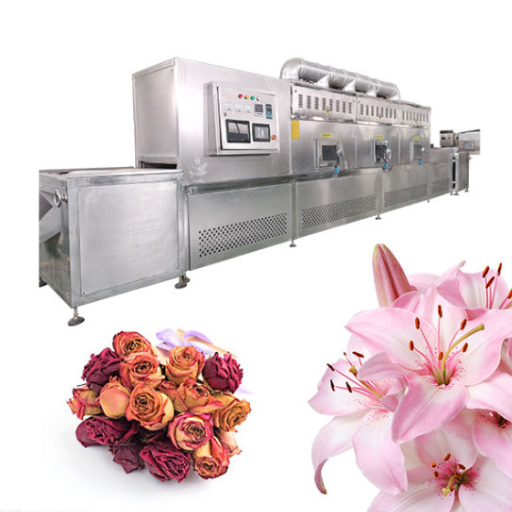Do you love crafts, and are you searching for a quick and straightforward method to save your favorite flower’s beauty? For ages, people have loved pressing flowers to preserve the beauty of the flowers forever, which is now easier with modern technology. In this definitive guide, we take you through steps to microwave press flowers. This technique saves time and guarantees that all lively shades and fragile features are perfectly saved. Whether new to this or an experienced crafter, it offers everything one requires for successful flower pressing with beautiful do-it-yourself (DIY) projects included at the end.
How Does a Microwave Flower Dryer Work?
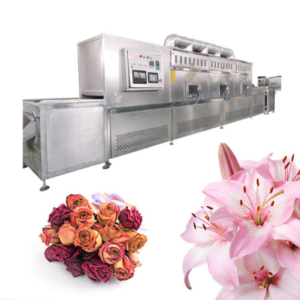
Image source: https://leaderfoodmachine.en.made-in-china.com/
Microwave flower dryers quickly dry flowers with microwaves as they are pressed between absorbent materials such as paper towels or microwave-safe flower presses developed for this purpose. A microwave heats the water molecules inside the blossoms to transform into steam, which is then taken in by bordering substances. Such a procedure can make the flowers dry in minutes while retaining their bright hues and delicate patterns – features that would be destroyed during ordinary air-drying methods.
What is a Microwave Flower Press?
A microwave flower press is a specialized tool that allows for rapidly drying and preserving flowers through microwaves. Typically, it has two solid plates with straps or bolts lined with absorbent materials such as cotton or blotting papers between each layer. As the flowers heat up inside this device, they lose their moisture content, which these linings absorb. Unlike traditional methods, this process takes just a few minutes to press and dry them while keeping their colors and details simultaneously.
Why Use the Microwave Method to Dry Flowers?
The quickest way to dry flowers is by using a microwave. It can also save the vivid colors and intricate details of blossoms fast and efficiently. The traditional methods of drying flowers commonly involve air, which may take some weeks to dry but eventually make them lose their brightness and fragile nature. In contrast with this method, where everything takes minutes or even less time due to speediness caused by microwaves, it still preserves their natural color and fine points, thus making them perfect for different crafts or decorations. Because of its convenience and effectiveness, many people prefer using microwaving over other techniques, especially those who are newbies in crafting things or have done so before.
Can You Press Flowers in the Microwave?
Affirmative flowers can be pressed in a microwave. In this technique, the flowers are put among two porous papers like baking sheets or blotting paper and then squeezed between two plates that can be used in a microwave or inside a microwave flower press. After that, the arrangement is heated at low power for short periods, which could usually be 20 to 30 seconds, so as not to overheat it. This way, moisture from the petals rapidly gets compressed and dried within minutes, but they remain brightly colored and detailed. To avoid burning out or over-drying, you should watch closely what happens during this procedure because one wrong move might ruin everything.
What Are the Steps to Press Flowers in a Microwave?
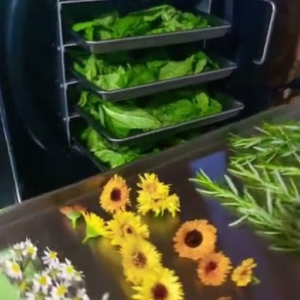
- Get the Materials: You must have live blooms, absorbing material (baking paper or blotting paper), two microwave-safe plates, a microwave flower press, and a microwave.
- Prepare the Blooms: Cut off the stems at an angle and remove any leaves below the water line. Ensure they are clean and dry.
- Organize the Flowers: Position them between two sheets of absorbent paper.
- Sandwich the Blooms: Place the paper with flowers between two microwave-safe plates or use a microwave flower press.
- Use Microwave: Insert this setup into your oven. Then heat it on low flame for nearly thirty seconds – twenty seconds will also do.
- Recheck and Repeat: Examine those blossoms cautiously; if they are not done, continue heating in short stages while checking until pressed hard enough and dried fully.
-
Cool Down and Complete Drying Process: Wait for them to cool completely before touching/using them in crafts, as they can burn you quickly.
How to Prepare Fresh Flowers for Pressing?
- Choosing Flowers: Go for fresh flowers without any marks or damage. Besides, they should not be too dense or bulky; therefore, daisies, pansies, and ferns are good options.
- Timing: You should pick them when they are in full bloom, and the morning is the best time to do so. Ensure that there is no dew but that it has dried up before you start picking them because if pressed with moisture, they may rot during the drying stage due to heat exposure later on.
- Clean and Trim: Remove unwanted leaves from the stem, then cut it down until it reaches the desired height. Make sure all parts of plant used are clean as well as dry since this will prevent growths such as fungi when pressed under heavy weight.
- Pre-Pressing: To flatten them slightly beforehand, one can place a flower between sheets of paper under some weight, like a book, for a few hours.
Selecting and preparing your flowers carefully using these steps can make better results in terms of quality and appearance while making pressed flower projects.
What Materials Do You Need for the Microwave Method?
For this purpose of pressing flowers by microwave, you must have the following things:
- Fresh Flowers: Select fresh, clean, and dry blooms.
- Absorbent Paper: Utilize materials like parchment paper, coffee filters, or blotting paper.
- Microwave-Safe Plates: Two flat plates that are safe for microwaving to sandwich the flowers between.
- Weight: You could use a microwave flower press or an extra weight such as a heavy book to get better results.
- Microwave: Make sure your microwave is on low heat setting so as not to burn them.
Gathering these materials ensures a successful and efficient flower-pressing process in the microwave.
How Long Should You Microwave the Flowers?
The time it takes to microwave flowers depends on what kind they are and how much moisture content each has. Usually, it’s best to start with 30-60 seconds at low heat. After the initial burst, check for dryness; if still damp, continue in 10-20 second increments, watching closely so as not to overdo or burn. Typically, most flowers should be fully pressed and dried within 1-3 minutes under these conditions, but let them cool for a minute before handling.
What Flowers Are Best for Drying in the Microwave?
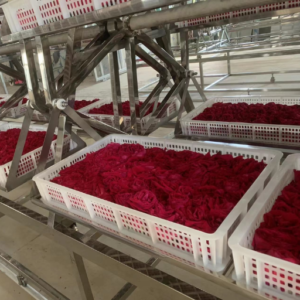
When picking flowers to dry in the microwave, opt for varieties that have naturally flat blooms and low moisture content; they work best. Pansies, daisies, and violas are good choices since their thin petals have simple structures. This method also works for drying leaves and ferns. However, do not use flowers with thick or fleshy petals or a lot of water, such as lilies and peonies; these tend to burn quickly or dry unevenly.
Can All Types of Flowers Be Dried?
Not all flowers can be dried out. Flowers with thin petals and low moisture contents are the most suitable for drying because they retain their shape and color when dried. For instance, roses, hydrangeas, and lavender fall under this category too. On the other hand, if a flower has thick fleshy petals or high water content like orchids, lilies, peony etcetera, these types are difficult to dry as they become brittle or discolored quickly during the process of drying them out even though it’s still possible to do so using specific techniques. Still, they may not produce similar results compared to those with more appropriate drying characteristics.
What Are the Best Flowers to Dry in a Microwave?
Roses: Roses are an excellent flower to microwave dry because of their traditional beauty and strong composition. Their petals also keep color very well; if dried correctly, they will retain most of their original shape.
Hydrangeas: These flowers are known for growing in large clusters that can be pretty showy, with colors ranging from white to pink to blue. They are among the best flowers for drying in a microwave. This is partly due to hydrangea petals holding onto color like no other plant material does when heat-treated this way – making them perfect craft supplies or decorating accessories!
Lavender: Lavenders have thin skins, which makes them ideal for microwave drying, where moisture is removed quickly without destroying the aroma oils contained within the petals themselves. It’s amazing how long these little purple buds stay fragrant after they’ve been dried this way; I think some people use them as air fresheners or something.
Are Flowers Like Roses Suitable?
Yes, flowers such as roses are great candidates for drying using microwaves. Roses possess inherent robustness and relatively low water content, which enables them to maintain shape and brightness once air-dried. When dried under appropriate conditions, rose petals become tough, hence remaining attractive for diverse ornamental purposes over extended periods. For crafts, potpourri making, or everlasting floral arrangements, roses can last many years if handled properly.
How to Preserve Your Pressed Flowers?

To keep pressed flowers well, do the following:
- Opt for Acid-Free Supplies: Use acid-free paper and glue to prevent yellowing or rotting over time.
- Press Correctly: Ensure flowers are completely dehydrated before placing them between heavy books or a flower press for some weeks.
- Cover with One More Layer: Guard your pressed flowers by covering them with transparent varnish or inserting them into clear plastic/glass sheets.
- Conditions of Storage: Pressed flowers should be kept in cool, dry places out of direct sunlight so that they do not lose color and become brittle.
- Be Gentle: Handle pressed flowers gently when moving or displaying them to retain their fragile structure and beauty.
With these methods, your pressed flower could be saved for years, which sustains its color and shape wonderfully.
What Are the Best Ways to Preserve Your Flowers?
Different approaches can be employed to keep blossoms beautiful for an extended period. Here are some of the most effective methods:
- Air drying: Air drying is one of the easiest methods. Excess foliage is removed from flowers, which are then hung upside down in a dark, dry place with good air circulation. It takes several weeks but helps them maintain their shape and some colors.
- Silica Gel: This technique uses silica gel—a moisture-absorbing substance called desiccant—which allows preservation while retaining lively hues and elaborate features. Burial of flowers in silica gel is quicker than air drying; sometimes, it can take only a few days.
- Microwave Drying: If you need something faster, a combination of microwave drying and silica gel will preserve blooms within minutes. Flowers should be put into a microwave-safe container together with silica gel, then heated at short intervals until completely dried. This method requires carefulness to prevent burns.
Every method has its own advantages, depending on the kind of flower and how you want to preserve it.
Can Resin Be Used for Preservation?
Indeed, flowers can be well preserved using resin. Epoxy resins are usually considered for this purpose. You should know that such resins enable you to do so without much trouble. By completely immersing the plants into a special liquid, hard solid bodies called polymers are formed around each flower part, thus saving them forever and ever more like a glass finish forever and evermore preserving their every detail inside themselves and never letting them fade away or crumble into dust again at all this method is one of those many ways in which people try to stop nature from taking its course with these beautiful things however some steps need be followed when working on it first put some flowers inside a container after which cover everything up-to where they cannot be seen using another substance such as mud bricks or even cement blocks then pour over enough amounts multiple times until there is complete coverage also wait until it becomes impenetrable finally let dry entirely for weeks depending upon thickness.
How to Seal Dried Flowers for Wall Art?
For wall art, dry flowers are sealed in the following concise steps based on popular methods from reliable sources:
- Choose your flowers: Pick out moisture-free, thoroughly dried flowers. Silica gel or air-dried flowers work best.
- Prepare the surface: Choose a strong backing, such as wood, canvas, or a solid frame, and make sure it is clean and dry.
- Arrange the flowers: Plan your layout by arranging them on top of this surface – tweezers can help with precision!
- Apply adhesive: Use clear-drying glue like Mod Podge or PVA glue. Apply a thin layer to each flower’s back and gently press it down onto the prepared area. Allow to dry completely.
- Seal the flowers: Take some clear acrylic spray sealant, and once your adhesive has dried, give this whole piece an even coat. Do this outside or in a well-ventilated room, following what its manufacturer suggests: it’s better to have many light layers than one heavy coat.
- Finish and Frame: Let everything dry appropriately before finishing with framing, which will protect against dust if desired.
By doing these steps, you can be confident that your dried flowers will stick securely and last long enough to become beautiful wall decorations.
How to Use Dried Flowers for Art and Crafts?
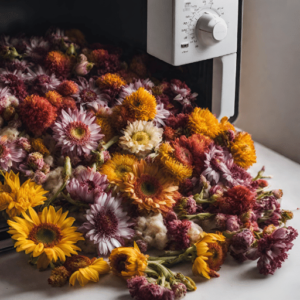
Employing desiccated flowers in art and craft is an excellent way of introducing natural beauty into creative projects. Here are several concepts to think about:
- Pressed Flower Cards: Design individualized greeting cards by pressing dried flowers on cardstock using glue.
- Floral Resin Coasters: Embed dried flowers in resin to create unique coasters that preserve the flowers’ fragile nature.
- Decorative Wreaths: Use dried flowers and foliage on a frame to make wreaths that give a rustic charm to any space.
- Potpourri: To make fragrant potpourri, mix essential oils with other botanicals, such as dried flowers, leaves, or seeds.
- Bookmark Embellishments: Make beautiful keepsakes by laminating small dried flowers into bookmarks.
These ideas are just some examples of how versatile dried flowers can be—they’re perfect for all sorts of artistic or crafty endeavours.
What Crafts Can You Make with Pressed Flowers?
A wide range of handicrafts can be made from pressed flowers. Here are a few suggestions:
- Pressed Flower Artwork: Arrange pressed flowers on paper or canvas, frame the finished piece, and create stunning wall art.
- Pressed Flower Candles: Insert pressed flowers into wax around plain candles so that a floral design shows through when they are lit.
- Flower Jewellery: Place pressed flowers in resin molds to make pendants, earrings, or bracelets – each unique.
- Phone Cases: Sandwich-pressed flowers between a clear phone case and protective cover for an individual nature-inspired accessory.
- Pressed Flower Luminaires: Apply pressed flowers to the outside of glass jars or lanterns. When illuminated, they give off a soft botanical glow that enhances ambient lighting.
These crafts use the fragile beauty of preserved blooms, transforming ordinary materials into loved decorative objects.
How to Create Pressed Flower Art?
Making pressed flower art is an easy and fulfilling process. Here are some steps you can follow to create your botanical masterpieces:
- Choose Your Flowers: Select fresh flowers or leaves that are not too thick. Flat, thin petals like those of pansies, daisies, or ferns work best for pressing.
- Prepare to Press: Use a flower press or open a heavy book. Put a coffee filter or parchment paper inside the media (or between book pages) to help absorb moisture. Lay the flowers flat on the paper without overlapping them.
- Press the Flowers: Close the book or press, applying even weight. If using a book, stack additional heavy books on top for more pressure. Let the flowers sit and press for 1-2 weeks until completely dry.
- Design Your Arrangement: Arrange your pressed flowers on a blank canvas, cardstock, or paper in any design you like. Try out different placements until you find a composition that pleases you.
- Attach the Flowers: Use tweezers to carefully pick up each pressed flower. Put a small dot of clear-drying glue or Mod Podge under and over each flower, brushing it gently to ensure good adhesion.
- Finish and Frame: Allow the glue to dry completely. Optionally seal your finished artwork with another layer of Mod Podge (or spray it with fixative) to protect it further. Display your creation behind glass in a frame for safekeeping.
These few steps let one make beautiful personalized artworks reflecting tender natural beauty.
Can Pressed Flowers Be Used in Resin Projects?
Indeed, the resin tasks can utilize pressed flowers. They can hold onto their shape and color provided they are well-dried and pressed, making them perfect for embedding into resin crafts. You only need to ensure that you dry your flowers entirely before putting them in resin if you want everything to succeed. Any moisture may lead to rotting or discoloration. When you use a precise type of resin, it becomes possible to produce beautiful jewelry, coasters, or even decorations that will serve as long-term memories while at the same time showing off fine points within these flattened plants.
Frequently Asked Questions (FAQs)
Q: What is the best way to press flowers?
A: The best way to press flowers involves using a microwave flower press. This method ensures quick and efficient drying, perfect for preserving the blooms’ vibrant colors and shapes.
Q: How do I arrange the flowers before pressing them?
A: Position each bloom separately on an absorbent paper towel to arrange the flowers. Lay the petals flat and ensure there is space between each flower. This step is crucial for achieving the best results.
Q: Can I use a microwave to press thicker flowers?
A: Yes, you can use a microwave to press thicker flowers, but you may need to increase the drying times and check the flowers frequently. Thicker flowers might require additional pressing to ensure they are scorched.
Q: Using a microwave, what materials do I need to make pressed flowers?
A: You need an absorbent paper towel, a microwave-safe plate, and a wooden flower press. These materials help to keep the petals flat and absorb moisture efficiently.
Q: How long should I use the microwave to press flowers?
A: Start by microwaving the flowers for 30 seconds at a time. Check the flowers after each interval, and repeat the process until the flowers are dehydrated. Be cautious not to overheat the flowers.
Q: Can I use epoxy with my pressed flowers for craft projects?
A: You can use epoxy to embed your favorite pressed flowers in various craft projects, such as jewelry or decorations. Epoxy helps preserve the flowers and adds a durable, transparent coating.
Q: How should I preserve flowers after pressing them?
A: After pressing, preserve flowers in a dry, dark place. To maintain their shape, store them between sheets of absorbent paper inside a book press or wooden flower press.
Q: What types of flowers are best for microwave pressing?
A: Many flowers can be used for microwave pressing, but the best results typically come from flowers with flat petals and less moisture. For example, daisies and hydrangeas work well, whereas thick flowers may require additional care.
Q: How can I ensure my flowers don’t discolor during pressing?
A: To avoid discoloration, arrange the flowers properly on absorbent paper towels and ensure they are not overheated. After initial drying in the microwave, a book or wooden flower press can help maintain their colors.
Q: Are there alternative methods for preserving flowers?
A: Yes, other methods for preserving flowers include air drying, using silica gel, and using epoxy resin. Each method has pros and cons, but using a microwave is one of the fastest and most efficient ways to make pressed flowers.













